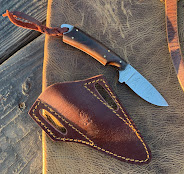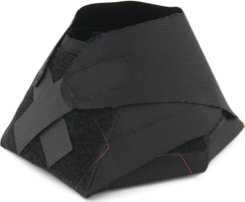Sheridan wrote me to see if I have a list of obstacles that I train my horses on. "Hello, I like your website and check it often to see if you have added more articles. By chance would you have a list of obstacles that you train your horses on? If you do, could you list them on your site or reply back to this e-mail with a list? Thank you in advance."
I really don't have lists, except maybe for grocery store trips. While there are some obstacle type exercises I do with horses, I don't have a checklist of what I want one of my horses to be able to do at any stage. I haven't really decided if obstacles and desensitization exercises are the same thing. If they are not, then both have overlapping purposes. At the origin, getting a horse good at an obstacle, can help the horse think through a problem as opposed to just relying on their instincts. If, of course, the rider goes about introducing the obstacle in a manner that a horse can accept. In the column on the right hand side under Annual Arena Challenges there is a bit of information on the type of obstacles and tasks I asked riders to do in these past events.
In those Annual Arena Challenges that I ran for nine years, I tended to stay away from the "carnival" type obstacles, instead I used props they were related to horsemanship and functional tasks. When I was a Army Range Rider, when the horses I rode would encounter new things that trouble them. I would make a mental note and when I was riding for non work related reasons, I would set some things up at my home ranch to continue to expose the horses to those new things. One time I was riding up a hill to get a view point to glass a valley. The hill was rocky with ledges like stairs. So later at home I built a set of stairs using railroad ties and dirt fill to ride my horses up and down.
One of things we encountered on duty as an Army Range Rider was supporting Army Change of Command Ceremonies. We would ride onto the parade ground and up to the viewing bleachers where we would receive a bouquet of flowers in those noisy crinkly plastic wrappers, which the noise always unsettled the horses, so we could dismount and give the outgoing Commander's wife the flowers, and the in-coming Commanders wife flowers. So the logically thing to do was to stop at Wal-Mart buy some flowers in those crinkle wraps and sack the horses out with them. You may have first put a fly mask with Velcro straps on a horse and found out that the first few times the horse flinched or spooked at the Velcro ripping away.
Another time, four of us Range Riders rode in a PRCA Grand Entrance for the National Anthem as we had to ride down a narrow entrance lined with supporting signs and banners. That troubled the horses, probably mine most of all, so at home I hung signage and tarps across the fences until the horses never minded them. Didn't take long.
Doing ground work with the young, green horses or restarting older horses, I sometimes drag a bag on the ground with tin cans with the rope on the bag on one hand and the lead rope in my other. I set it up so the horse is following the bag and me on the ground leading, but soon I will stand by the horse's head and drag the bag towards us. This may only take 5 minutes for a horse to get used to, or may take 30 minutes, Once the horse is comfortable with it, I'll mount and using a 14-18 foot long rope without dallying it on my saddle horn, back the horse so the bag is coming towards us. Not always, but most times I'll drag for a few feet then walk the horse forward and let him drop his nose on the bag until he becomes disinterested in the bag, then back the horse up, pickup slack in the rope and begin again.
Another thing I'll do on a green horse is set up a couple of parallel ground poles and a traffic cone at each end maybe 10 yards away. I can trot the horse around a cone, then straight through the ground poles, then around the other traffic cone in the opposite direction. I'll change that up sometimes with a turn around the traffic cone then going wide and across the ground poles. I'm trying to put a reason into the horse following a feel on the reins and my legs. See diagrams below for clarity.
You can extend the distances between the traffic cones and ground poles in the beginning the benefit and tighten it up as your horse get better at turning in small diameters then going straight, between your legs and reins, through the ground poles. I got onto being able to walk then trot very small circles, without losing forward momentum, as some of the trails I followed into the mountains, checking for Mule Deer and Adaud Sheep sign, would sometimes lead me to dead ends when I would have to turn uphill around and in-between Cholla and Prickly Pear cactus. It became just necessary to be able to do that.
I think that doing many different things and exposing your horse to odd things just helps them learn they can think through a new situation. But a key point here is to allow them the time to do so. Pushing a horse through something scary to them causes them anxiety from both ends,...the scary thing (obstacle) and you pushing them or banging on them. You may get the horse through it, but he will still be troubled. One of the key points in the Arena Challenges I ran is that I did away with a time constraint. I did not want a horse to balk at crossing at bridge then given only 30 seconds to get comfortable with another try. Sometimes, I had horses and riders take several minutes to do an obstacle. I can't remember anyone verbalizing an issue with the lack of a time requirement. Besides a 30 second delay in a horse doing an obstacles would seem like 5 minutes for the rider so sometimes a rider would quit the attempt before success, despite my urging to just let the horse settle, relax then try again. Funny thing about horse's and their curiosity, if a horse you are riding becomes concerned at some object, they will often stop. If you do not try to push them forward before they are mentally ready, they will often resume taking another fee steps forward before stopping again. This is a win for the horse. Let him settle and he'll often continue a few more steps. Eventually arriving at the object and dropping his head and nose on it.
So take a look around at your environment. If you are riding on a county road with the occasional ATV or side by side, or even loud motorcycle driving by, then it would pay off for your horse to have seen this before and became used to it. One my youngest horse, the first time he saw the tractor right by his pen, he became frantic and ran to other end or his pen. So for a couple days in a row, I would drive the tractor up to his pen, work the bucket, dismount, call the horse over and pet on him, then get back on about my tractor business. After a couple days, three days maybe, he didn't pay it any mind. They can get used to a lot if we give him the time necessary to understand in their minds that the obstacles or situation isn't a threat.
Sorry I really didn't cover a list of obstacles, but really any object that the horse needs just a bit of time to accept becomes an obstacles. What I have available and sometimes use are ground poles to step over/side pass over or to back between; bridges to cross; platforms to step on with the front feet and do a turn on the front end; slickers - picking them up off the fence, putting then on, and sometimes handing them from a bow gate so the horse has to walk by it or underneath it; pulling a bag up using a rope over a bow gate and backing your horse; tarp to drape over the horse and have him carry it, and/or walk across it when it's on the ground. I have coffee cans with upright 6 foot PVC poles cemented into the cans, much like poles for pole bending, and sometimes place them so I can ride the horse through them set up as tight switch backs - you'll need good control of the horse's feet to independently control the horse's front and rear feet to get the bend with forward momentum necessary so do this without knocking over the poles.
Whatever you use for objects and obstacles, I would think that these things are important:
Slow is fast - meaning give the horse time to accept the object and he will rapidly progress as pushing him through on your time will just extend the time necessary for him to get comfortable with the object and increase his anxiety, perhaps learning that you are not a very patient leader.
Make sure whatever you ask the horse to do is safe. An example is using a old dry rotted tarp and ask him to step on and walk over it, could run the risk of the horse foot penetrating the tarp and getting stuck to on e of his feet, especially if he is wearing shoes. I have saw this happen. Same for a wooden bridge or piece of plywood as a platform. Just look at the obstacles and minimize potential mishaps.
Lastly, in my mind the objective is not getting the horse through an obstacle. It is how you ask and how he does it. An example is asking the horse to back through parallel ground poles. A rider may be happy with a horse that is backing straight through the poles. but if the horse's head is high and his mouth gapping and he is pushing with his front feet and falling backward with his hind end, well that's a plain ugly, imbalanced backup basically using pressure in his mouth through the bit and the horse will soon get bracey and worse about it. Instead, back more with your seat with the horse's broke at the poll and nose vertical where he is stepping with the hind end and picking up his front feet to follow to follow the diagonal.




















No comments:
Post a Comment